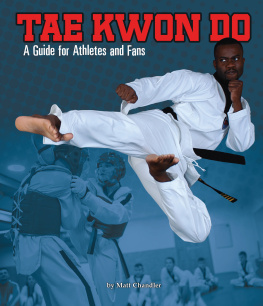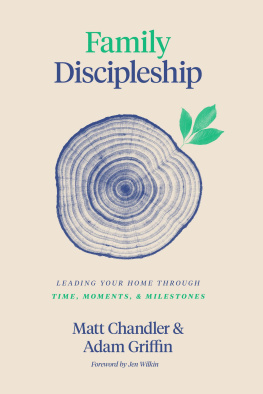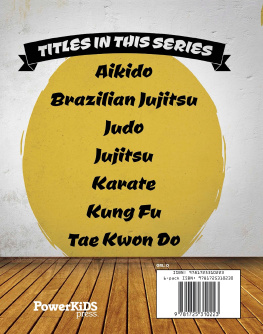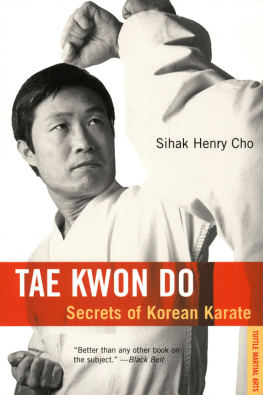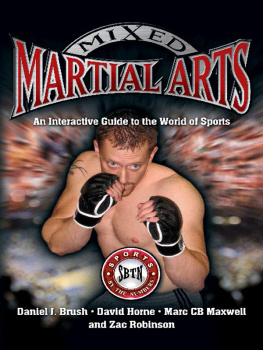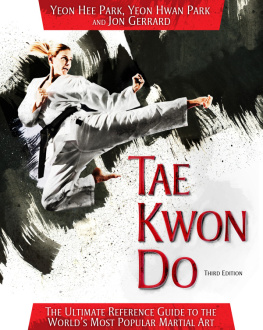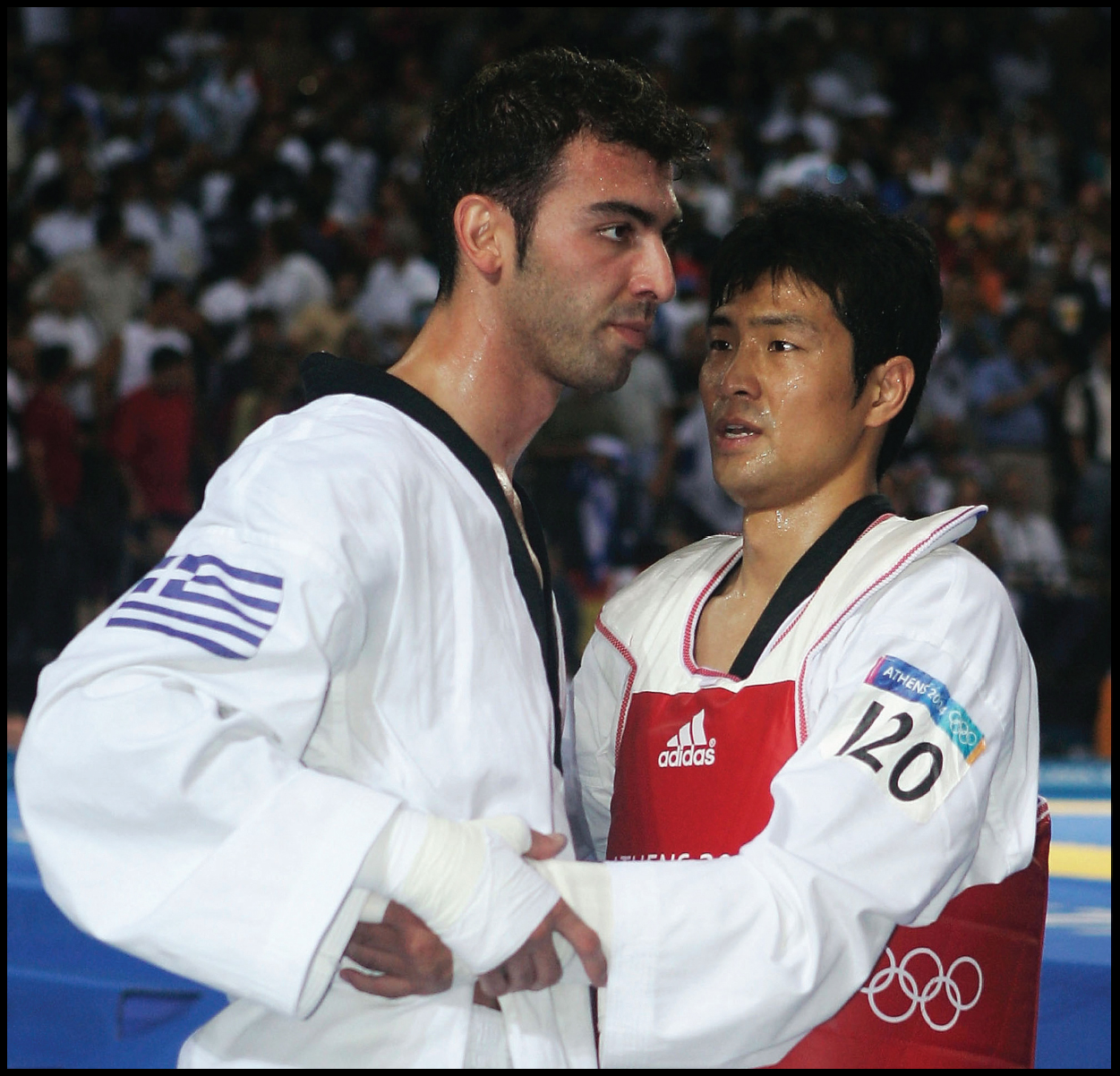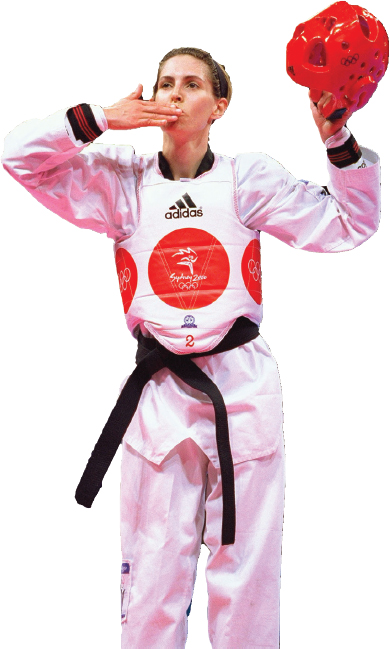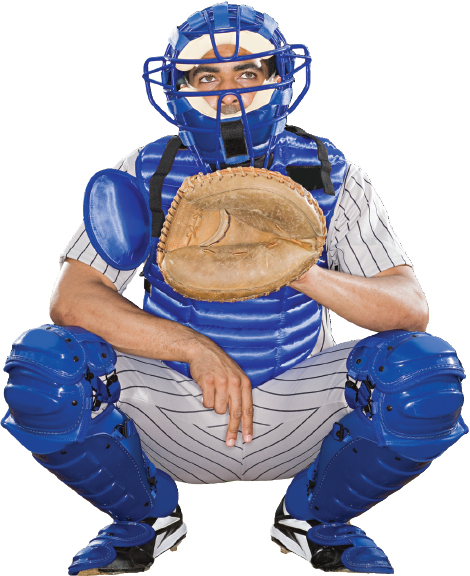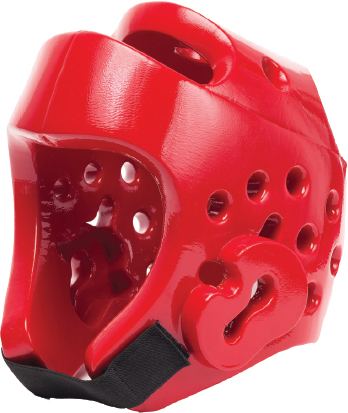INTRODUCTION
At the 2004 Summer Olympics in Athens, Greece, the stage was set for a hometown heroto win gold. Athlete Alexandros Nikolaidis of Greece faced off against Dae-Sung Moonof South Korea in the gold medal match in competitive tae kwon do. The crowd wascheering wildly for Nikolaidis. But Moon was a world champion, and he was ready tofight.
The two men met in the center of the ring and exchanged a handshake before the battlebegan. The two fighters danced around the ring, sizing each other up. Tae kwon dois a sport of strategy and timing. Both men were looking for an opening to delivera powerful blow.
Early in the first round, Moon struck. The South Korean fighter delivered a roundhousekick to the head of Nikolaidis. The Greek fan-favorite crumpled to the mat, and thematch was over. Moon had won the gold medal!
Alexandros Nikolaidis (left) earned two Olympic silver medals during his career,in 2004 and 2008. Dae-Sung Moon won the gold in 2004.
THE HISTORY OF TAE KWON DO
The earliest forms of the martial art of tae kwon do date back more than 2,000 years.In the first century, it was called subak and practiced in Korea. Other versions,such as taekkyon, gained popularity around the seventh century.
In 1909 Japan conquered Korea and banned all Korean martial arts. For the next 40years, very few fighters would risk their freedom to practice the sport. In 1945World War II (19391945) ended. Korea was once again a free nation, and taekkyonreturned.
Golden Girl
Growing up in Melbourne, Australia, Lauren Burns never dreamed of competing in theOlympics. Her career in tae kwon do began with lessons at the local . Burnstrained tirelessly, and her hard work paid off. She won 12 national titles in Australia.In 2000 she made the Olympic team and earned the chance to compete in her home country.Burns became the first Australian to win gold in tae kwon do!
Choi Hong Hi helped spread tae kwon do to more than 120 countries around the world.
In the 1940s and 1950s, the martial arts community in Korea was divided. There weremany different , and each had different styles and rules. It wasnt until 1955that Korean military general Choi Hong Hi brought all of the martial arts kwans together.He named the new martial arts group the Korean Taekwondo Association.
Within 10 years, the sport grew in popularity. The U.S. Taekwondo Association wasformed in 1967. In 1973 teams from 19 countries participated in the first-ever WorldTaekwondo Championships.
Early martial arts taught discipline, obedience, and physical fitness. More than2,000 years later, those ideas are still the foundation of tae kwon do.
Modern competitive tae kwon do uses kicks and punches, just as karate does. But thetwo martial arts are also very different. Karate focuses on the importance of handstrikes as well as kicks. In tae kwon do, kicks are considered more valuable. Fightersdont use hand strikes very often. They focus on more complicated leaping and spinningkicks. This makes it an exciting sport to watch.
Today there are two styles of tae kwon do. Competitive tae kwon do trains athletesto fight. This is what you see in the Olympics. But many students of the sport practicetae kwon do without ever competing in a match. They develop strength and staminaby training. They master the skills of the sport, but they dont or compete.This is the common form of tae kwon do you will find at most local schools
FACT
The Korean government trained its police forces to use tae kwon do techniques followingWorld War II.
BATTLE GEAR
At the 2016 Olympics in Rio de Janeiro, Brazil, Jackie Galloway of the United Stateswas matched against Crystal Weekes of Puerto Rico. If Galloway was going to earnan Olympic medal, she would have to take down the teen, who was competing in herfirst Olympics. Early in the second round, Galloway delivered an explosive kick tothe face of Weekes, scoring three points. The younger fighter never recovered fromthe kick and lost the match 50. Galloway went on to win the bronze medal.
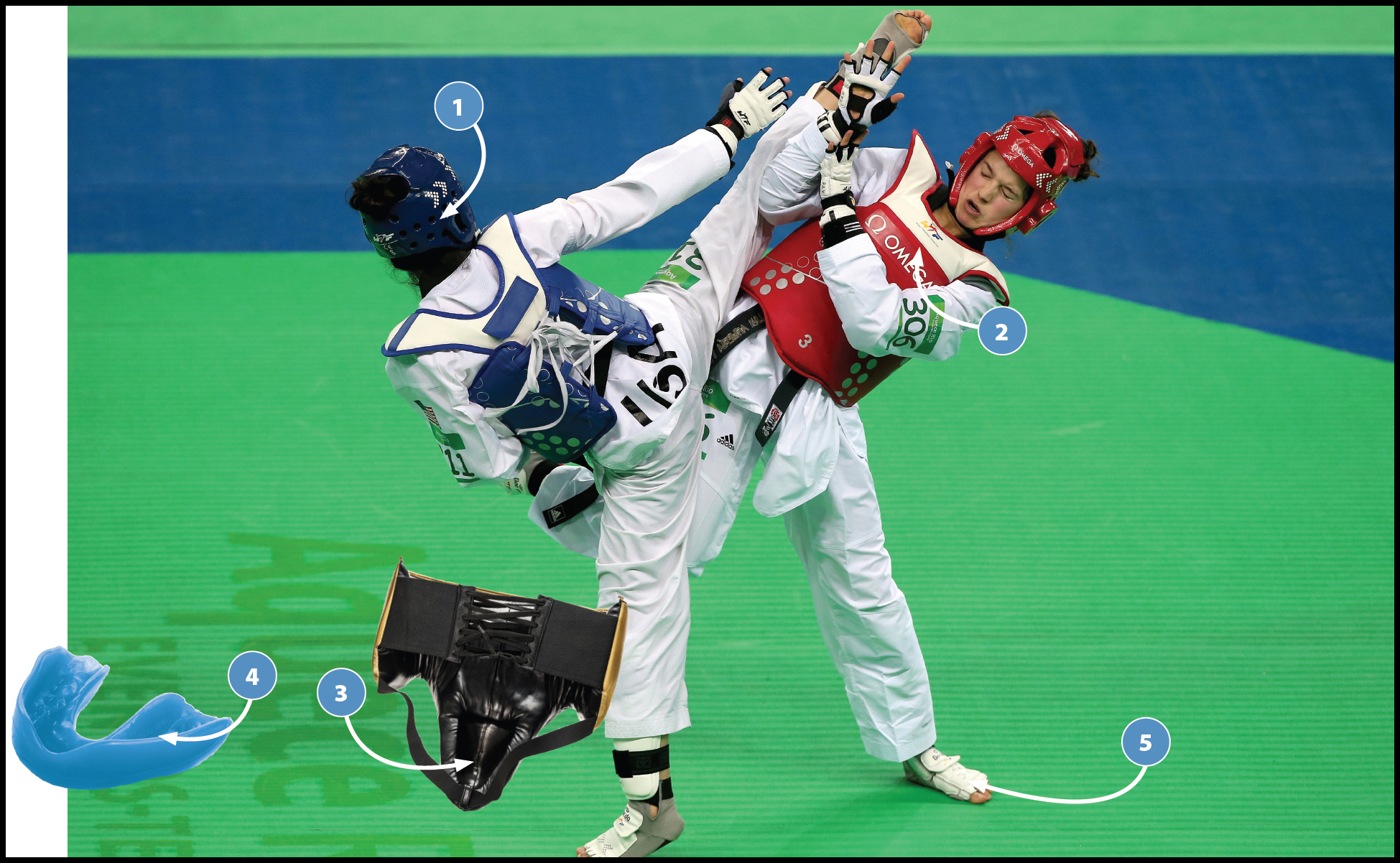
1. Headgear: All competitors wear padded headgear. It protects against and protectsa fighters ears. 2. The Hogu: The hogu is a padded chest protector worn in competition. It is especially importantto protect the ribs from hard kicks. Modern national and international competitionactually uses electronic hogus, which measure the strength and validity of strikes. 3. Groin Protector: In competition groin strikes are illegal. The groin guard is a shield to protectagainst an accidental strike. 4. Mouthguard: All fighters wear plastic mouthguards. They protect the teeth and protect againstaccidentally biting your tongue. 5. Shin/Foot and Forearm Protectors: A kick to the shins or forearms can be devastating. Hard plastic guards cover a fightersshin bones and forearms.
Like all fighters, Weekes was wearing lots of protective gear in the ring. But protectivegear doesnt mean a fighter wont get hurt. Her headgear covered her head and ears.But her face was left unguarded. So when Galloway delivered the kick to her face,the full force stunned Weekes. Her gear still offered some protection. Fighters arerequired to wear a mouth guard. Thanks to her mouthpiece, Weekes lost the match butnot her teeth.
FACT
In the 1930s, students of tae kwon do experimented with using baseball catchersequipment as one of the earliest forms of protective gear.
In tae kwon do competition, fighters wear headgear, a mouth guard, a chest protector,groin guard, forearm guards, and shin guards. The use of protective gear adds morestrategy to a match. A fighter must work to strike an opponent in places where hisor her body is exposed. Galloway struck Weekes in the face. Fighters can also attackthe back of an opponents legs and arms.
Protective equipment guards against fighters incurring major injuries, but it canalso have limitations. A fighters movement is less free when wearing protectivegear. Fighters are trained to adjust, but it does make a difference. So much protectivegear can also cause an opponent to let his or her guard down. A kick to the facelike Galloway delivered to Weekes reminds everyone what a physical sport tae kwondo can be.
Tae kwon do headgear is usually made of foam about 0.75 inches (2 centimeters) thick.
RULES OF TAE KWON DO
Tae kwon do is built on tradition. Athletes are expected to follow rules inside thedojang. Respect is shown to the instructor, the dojang, and the opponent. Tae kwondo has five guidelines:

